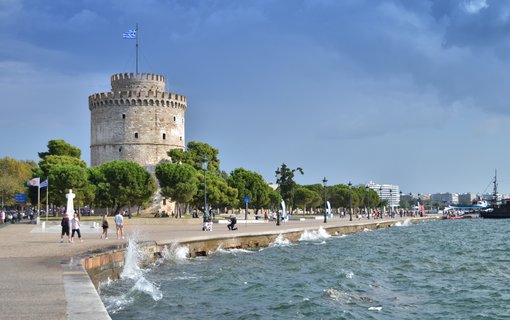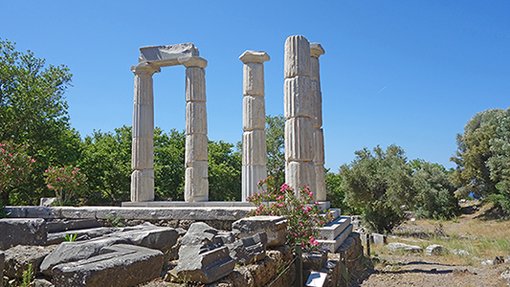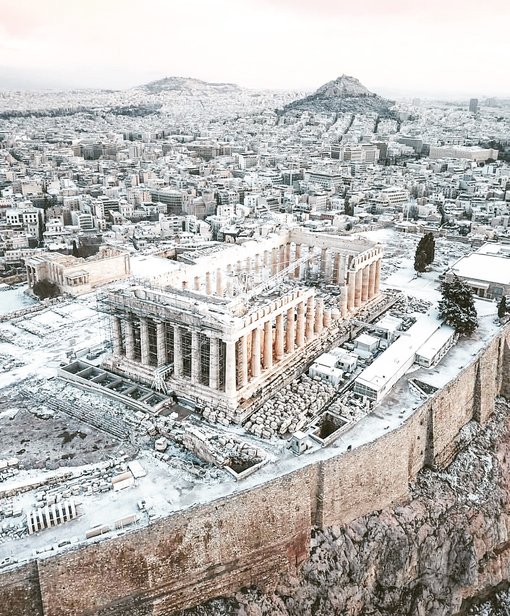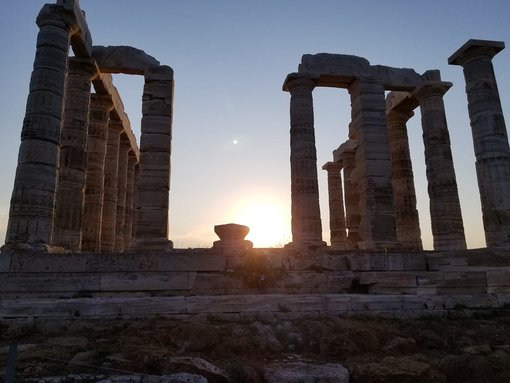It may be difficult to believe, but the world's oldest surviving theatre is located in Thorikos, not one of the great towns of ancient Greece. The ruins of the ancient city of Thorikos (or Thoricus) are located over 40 kilometres from the centre of Athens, on a hill outside the town of Lavrio.
The town of Thorikos
In the Neolithic era, Thorikos formed a community associated to mining the region's rich lead and silver mines. The village grew into a town and flourished under the Athenian Republic. It was one of the twelve Athenian municipalities from the sixth to the fourth centuries BC.
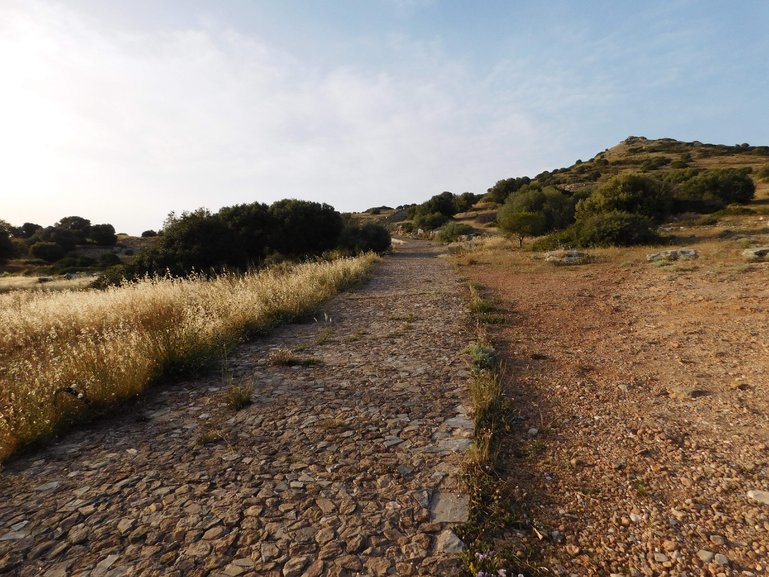
The path leading to the theatre
What remains from the old city of Thorikos are the theatre, portions of the village, mining galleries, and related metallurgical infrastructure. The area also includes the Dionysus temple, a square tower from the fourth century BC, graves, and the sanctuary of Demeter and her daughter. In addition to the mines, there was a marble quarry that was used to build the historic theatre. This quarry was active until the early Byzantine era. In overall, the mines and settlement were probably operational until the seventh century AD.
According to the Belgian archaeologists who excavated the area, Thorikos is one of the oldest industrial zones in Europe. In the centre of the town, the theatre was the meeting place and the decision-making centre for the townspeople. On several occasions, it was also used for artistic events and theatrical performances.
The theatre of Thorikos
The theatre is thought to have been built in the second half of the sixth century BC, making it the oldest surviving ancient theatre in Greece, and hence the world. Unlike other later theatres, its shape is ellipsoidal, and its orchestra is rectangular. Although the fact that its orchestra is not circular is unusual, it was common to all early Greek theatres (such as those in Rhamnous and Trachones).
Except for its southern side, which is supported by a 24-metre-long retaining wall with ends founded on natural rock, the theatre is fully built within the rock. A modest Dionysus temple, of which only the foundations survive, occupies a section of the orchestra to the west. At the same period, there are traces of a cult altar on the east side. Finally, the upper side of the western arched gate is still in good condition.
The theatre must have been expanded towards the end of the sixth century. This resulted from the need for the townspeople to meet following Cleisthenes' state reform in 507 BC. It was necessary for the formation and operation of the democratic state. During that time, its capacity must have been 3000 people.
The theatre today
The American School of Classical Studies excavated the theatre in 1886. The Belgian Archaeological School has excavated the rest of the area systematically from 1963, spanning three decades. Throughout the 1960s and 1970s, the theatre hosted a variety of cultural performances. However, the lack of upkeep made its use unfeasible. Unfortunately, both the theatre and the archaeological site are currently underutilised and unprotected.
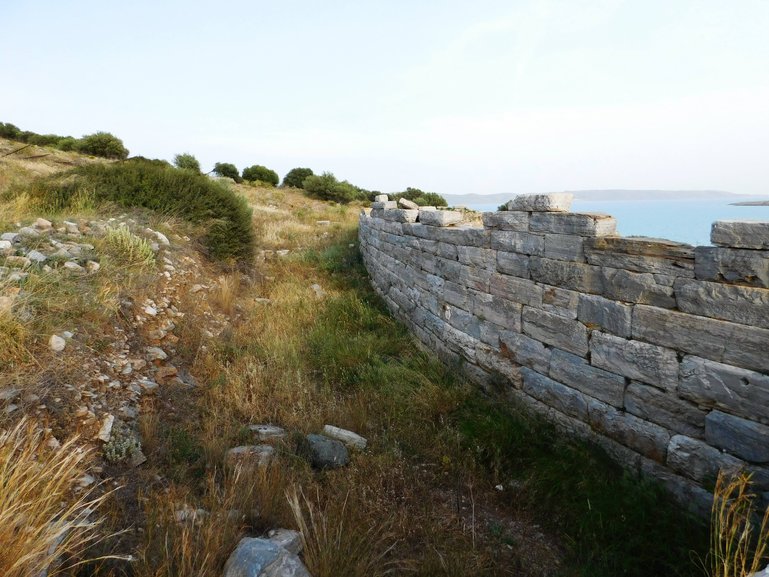
The southern retaining wall
However, Thorikos' theatre is a wonderful sight that is well worth a visit. The view of the sea from its stands is stunning, and the location radiates a sense of quiet and tranquillity. Especially at dusk, when the sun's orange hues embrace the ancient stones, you get the impression that an ancient drama is about to begin. The fact that this area was one of the birthplaces of democracy and the art of theatre is truly amazing.




